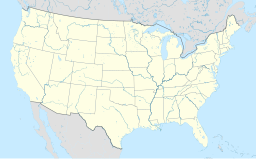Bristol, Pennsylvania
| Borough of Bristol | |
| Borough | |
|
Lions Park on the Delaware River
|
|
| Country | United States |
|---|---|
| State | Pennsylvania |
| County | Bucks |
| Elevation | 20 ft (6.1 m) |
| Coordinates | 40°06′12″N 74°51′05″W / 40.10333°N 74.85139°WCoordinates: 40°06′12″N 74°51′05″W / 40.10333°N 74.85139°W |
| Area | 1.9 sq mi (4.9 km2) |
| - land | 1.6 sq mi (4 km2) |
| - water | 0.2 sq mi (1 km2), 10.53% |
| Population | 9,726 (2010) |
| Density | 6,016.5/sq mi (2,323.0/km2) |
| Settled | 1681 |
| Mayor | Joseph Saxton |
| Timezone | EST (UTC-5) |
| - summer (DST) | EDT (UTC-4) |
| ZIP Code | 19007 |
| Area code | 215 Exchanges: 781,785,788,826,874 |
|
Location of Bristol in Bucks County
|
|
| Designated | January 13, 1949 |
Bristol is a borough in Bucks County, Pennsylvania, 23 miles (37 km) northeast of Center City Philadelphia, opposite Burlington, New Jersey on the Delaware River. Bristol was first incorporated in 1720 but historically, after 1834 became very important to the development of the American Industrial Revolution as the terminus city of the Delaware Canal providing greater Philadelphia with the days High Tech Anthracite fuels from the Lehigh Canal via Easton. The canal and a short trip on the Delaware also gave the town access to the mineral resources available in Connecticut, New Jersey and New York via each of the Morris Canal, the Delaware and Hudson Canal, and the Delaware and Raritan Canal, and connected the community to those markets and trade from New York City. All these factors spurred development of Bristol and nearby towns, explaining in part the industries which developed in the region.
Although its charter was revised in 1905, the original charter remains in effect, making Bristol one of the older boroughs in Pennsylvania. 7,104 people lived in Bristol in 1900; 9,256 in 1910; 10,273 in 1920; and 11,895 in 1940. The population was 9,726 at the 2010 census. The current Mayor is Patrick Sabatini Sr.
Samuel Clift founded Bristol, having received a land grant from Governor Edmund Andros of New York. The grant became effective on March 14, 1681 (new style) or March 4, 1681 (old style) at the same time as William Penn's Charter from Charles II became effective. Clift was required by the grant to maintain ferry service across the Delaware River to Burlington, New Jersey, and to run a public house or inn. The inn later became known as the George II.
...
Wikipedia




